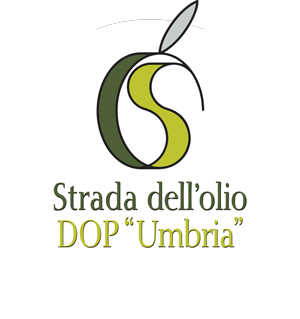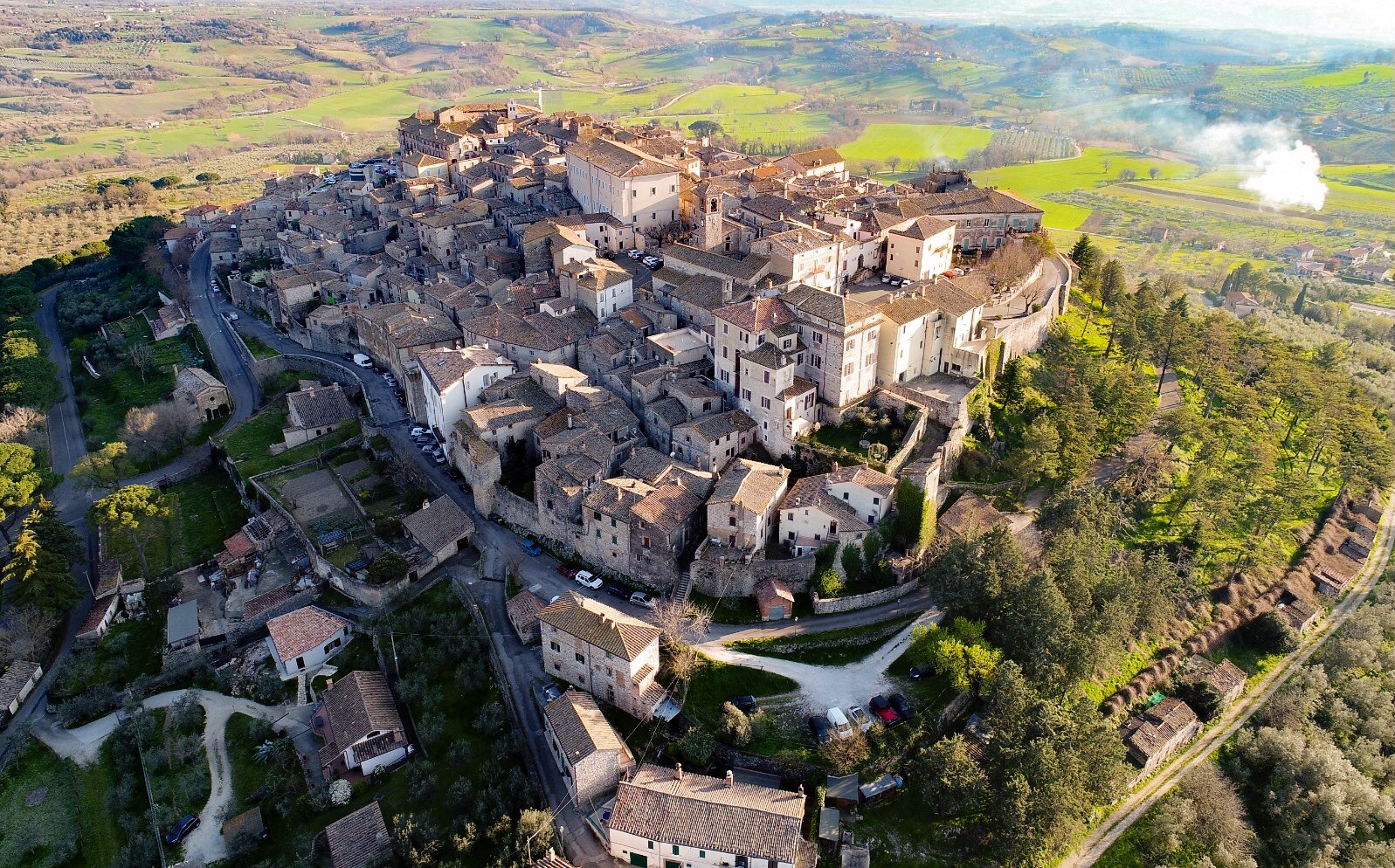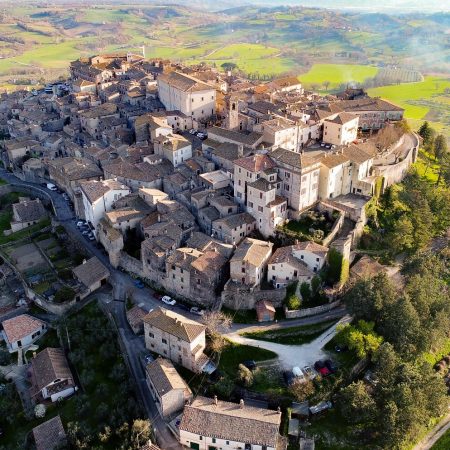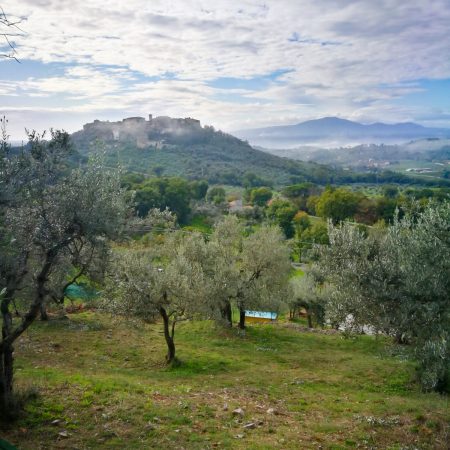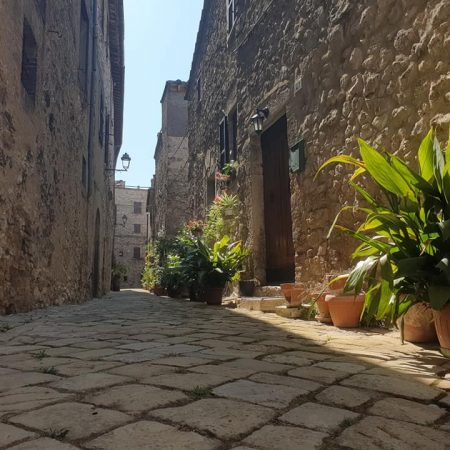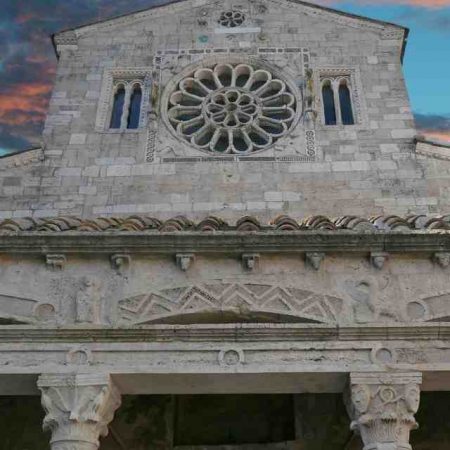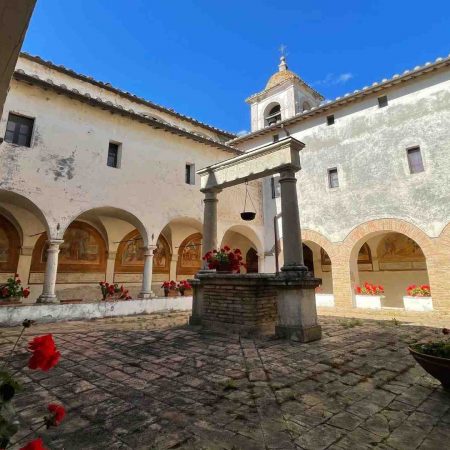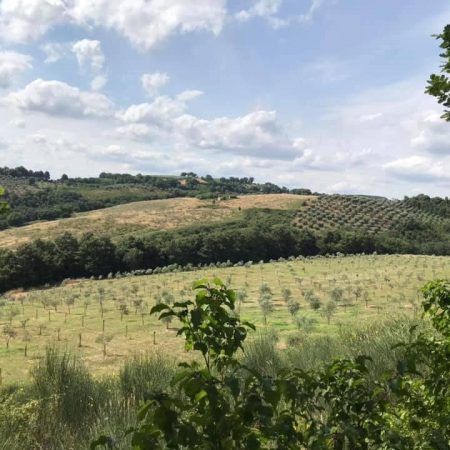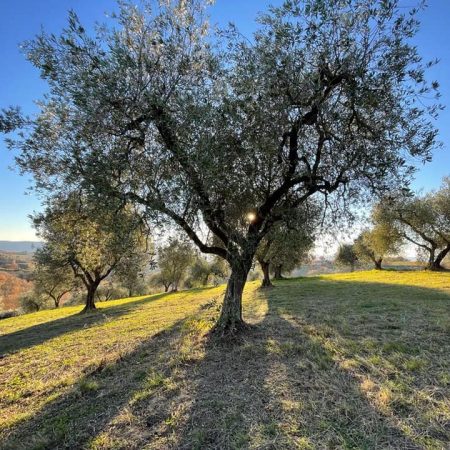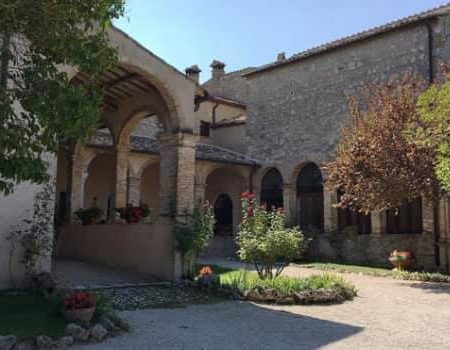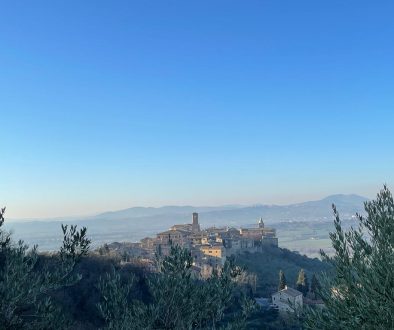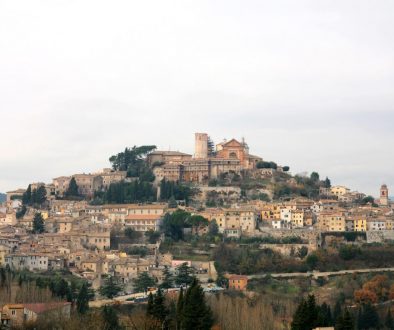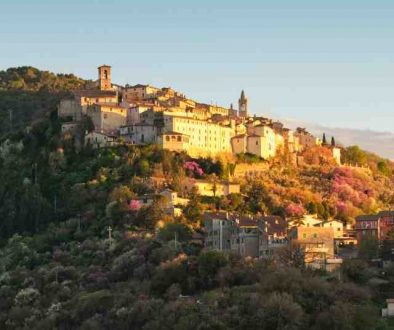The hamlet of the Olea Mundi World Collection
From the moon-shaped hill on which Lugnano stands, you can admire the bend of the Tiber river, which flows through the beautiful countryside and, from the convent of San Francesco, evokes ancient sweetness.
Lugnano in Teverina is framed by a suggestive hilly landscapes. One of the “Borghi più belli d’Italia” (most beautiful villages in Italy) in Umbria, located in the Tiber valley from which it takes its name, it retains a typically medieval urban aspect, with its surrounding walls, ancient buildings, and its towers; one of the most beautiful, thanks to its integrity, is “Torre della Palombara” namend after a stone sculpture, placed on it, which portrays a dove symbolizing an ancient legend according to which the inhabitants of Lugnano in Teverina had been warned of the arrival of the enemy by the flight of a dove, and thanks to it they had the time to organize themselves to drive back the invaders.
The village is a maze of narrow alleys, stairways, arches that still retain the sixteenth-century toponyms; In the village stands the sixteenth-century Palazzo Farnese-Ridolfi also known as Palazzo Pennone due to its size and its dominant position over the rest of the town. It is the seat of the Municipality and is certainly the most elegant building in the historic center with its ashlar and travertine portals, and is curiously cut in the middle by a gallery of the same name.
But the real highlight of Lugnano in Teverina is the Church of Santa Maria Assunta, one of the most notable examples of Romanesque architecture in the whole of Umbria, built between the 11th and 12th centuries on a pre-existing parish church, and it elevates in all its magnificence on an isolated square presenting a facade that culminates in a sculpture of an eagle, the heraldic motif of Innocenzo III who promoted its construction, and decorated by a rose window, on the sides of which are two mullioned windows. It is also enriched at the base by a beautiful portico resting on smooth and twisted columns. The band that connects the lowered arches is instead decorated with Cosmatesque motifs depicting the Evangelists.
Its interior is also remarkable: the altar preserves a fifteenth-century alabaster crucifix and in the apse a sixteenth-century triptych and an interesting Crucifixion from the Giotto school.
oil and olive treeshad become one of its flagships, in fact, since 2014 it is home to “Olea Mundi” the world collection of olive trees where there are about 1200 olive trees, which include over 400 accessions of olive trees from 23 olive-growing countries in the Mediterranean, the Middle East and new cultivation areas. The collection includes 263 Italian varieties from almost all regions of Italy, 128 varieties from various countries around the world and 60 minor varieties from the Umbria region.
The main product of this place is extra virgin olive oil; The territory is part of the production area of the Dop Umbria, Amerini hills.
Tourist Information Office:
Piazza Santa Maria tel. +39 0744 900072
Municipality of Lugnano in Teverina (Tr):
via Umberto I, 36
tel. +39 0744 902321
